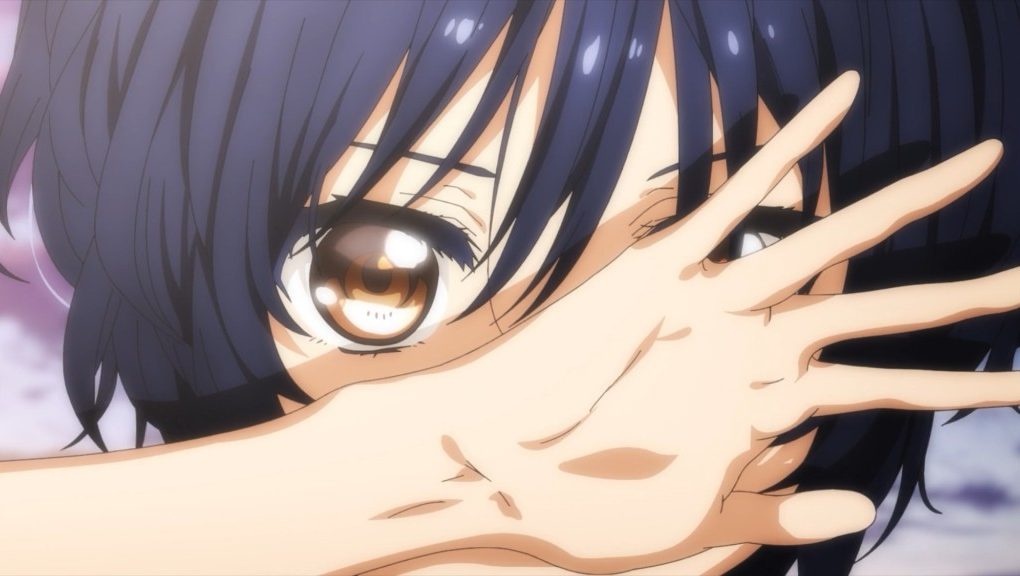“So,” she asks. “You said that you were going to try to do better about watching anime this year. How’s that coming along? After all, we haven’t seen a blog post since Weathering with You, and that’s not even a seasonal anime!”
Ordinarily, I think to myself, I’d be expecting to have to go on the defensive. But not this time. I’ve been watching anime, you know.
Asteroid in Love

While my original infatuation with Asteroid in Love (Koisuru Asteroid/Koias) was partially motivated by its status as the first Dogakobo anime in quite a while boasting a premise that didn’t immediately make me feel like someone had dumped slime all over me. Sadly, the production values that grace the premiere with such style—the aesthetically pleasing character designs and distinctive compositions and lighting—hasn’t quite held up since. With the exception of episode 5, which had beautiful shot composition to go with bouncy animation highlights, the rest of the show has been at a certain level of competence and not much more than that. Nothing to sneeze at, but still, we think fondly on the Shouta Umehara days.
As for the story, though, it’s pretty standard, although the fact that it’s allowing its female cast to express genuine excitement and interest about the earth sciences—something rare enough in real life, let alone in anime. Of course, it’s filtered through the expected lens of being a moe slice-of-life school show, but we’ll take what we can get. The characters themselves also don’t stand out especially to me despite some impulses toward achieving more depth; but again, we’re hear for the cuteness and in hopes of neat episode production. So no complaints from me!
Keep Your Hands Off Eizouken!

For a show that’s as good Eizouken is, I find myself less emotionally invested in it that I’d expect. This, obviously, says far less about the show than it does about me—or about the struggle of watching weekly anime when life is moving so fast in between Sundays that each one seems as far from the prior as the burning of Rome. But I suppose that’s beside the point of this review; what I really want to say is that I really do like Eizouken a bunch. I don’t really have a huge attachment to Maasaki Yuasa, so you trust me when I say this is a solid show from the ground up—from the hugely likable characters to the compelling world design (I wish we saw more!!) to its clear understanding of the ups and down and exhilarations and disappointments of the creative process.
I’ve seen a lot of people chatting about how Eizouken is specifically a love letter to animation, but honestly I feel like its drifted away from that sort of specificity as the show has gone along, instead moving toward a broader sort of appreciation toward creation. This, in my opinion, isn’t a bad thing, and indeed the frustrations Kanamori encounters in working with two hot-and-cold creators bears striking resemblances to completely unrelated workplaces and workflows. So perhaps Eizouken has become something that even non-sakuga nerds can enjoy and relate to. Criticism, deadlines, inspiration, exhaustion, triumph, play, and work… Eizouken kind of has it all at this point. And that’s pretty cool.
A Certain Scientific Railgun T

Oh, lands, it is so good to have a Tatsuyuki Nagai-directed TV anime back on the schedule, and what an even better treat it is that it’s Railgun, a sub-franchise he apparently loves quite a lot to come back to it yet again. Someone else said that both Railgun T and In/Spectre (more on that later) feel like artifacts from a completely different era of anime. I agree with that, but with Railgun T specifically there’s a very specific charm that comes with its blend of coffeehouse AU vibes and very genuine threats to the daily lives of the girls of Tokiwadai and beyond. The way the show is everything at once—a slice-of-life show, a comedy, a shounen battler, etc.—hews it far closer to my nebulous platonic ideal of anime that almost any anime from the current era, which are more streamlined.
And this is where director Nagai’s deft touch comes into play, as Railgun T once again reminds me that one of the previous series’ greatest strengths was their ability to flow gracefully between tones. Take the most recent episode of Railgun T: in one episode we have the dramatic confrontation between the Wannai-Awatsuki combo and Baba, Uiharu’s teasing of Kuroko generating a load of funny faces, and the dead-serious-not-even-really-fun reactions of a livid Misaka to seeing Kongo beaten and unconscious on her behalf. It all works magnificently together, and the simple brilliance of that (plus the nostalgia factor of seeing all these character back) might be why Railgun T might actually be my favorite anime this season.
Healin’ Good Precure

Yes, my friends, after skipping a season (or two, I can’t really remember), I’m back on the Precure train. And what a time for it, too, as Healin’ Good Precure seems to have that shimmer to it known as “good Precure energy.” We’re of course less than a handful of episodes in and a good start to any given Precure doesn’t necessarily predict the quality of the remainder. But it sure can get an iteration headed in the right direction, as Healin’ Good‘s early steps have done.
Those early steps have included merits as diverse as mascots with a uniquely defined sense of agency, a pink lead with a really compelling personal motivation for stepping into a magical conflict, and two support Cures who seem to stand well positioned for contributing substantially to the overall dynamic of the show. Of these, the first seems to most striking, and the compassion and uncertainty that have defined Rabirin and Pengitan (respectively) lend their interactions with Cure Grace and Cure Fontaine a kind of depth that a 49-episode series can be built on. It’s those smaller details that often carry a Precure series through the inevitable ups and downs of product and storytelling; Healin’ Good Precure is nailing those so far.
Quick Takes
“Now, hang on!” I hear you saying. “That’s only four shows, and you’re definitely watching more than that this season. How are we into the quick takes section already?” Well, you know, sometimes you don’t have much to say about things even if you’re watching them—and I have other, bigger fish to fry than this post! So here we go.
I have minimal things to say about the anime adaptation of In/Spectre, which has gotten popular for being exactly what I knew it to be from the manga. The show preserves the manga’s charms (although I do have to say having an actual voice for Kotoko breaths even more personality into her), and actually looks a lot better than I’d hoped from the baleful previews. I’m also watching Heyacamp still, but what can you really say about a 3-minute-long show besides, Hey! It really still feels like Yurucamp despite being so short. And now, for the drops:
- 22/7: For about an episode and a half, I had hope. I thought it was going to be a successor to AKB0048 unlike anything we’ve seen before. That it so rapidly burned off my excitement and goodwill in two episodes is a testament to how weak the characters aside protagonist Miu were, and how uninspired their focus episodes were. Alas!
- Somali and the Forest Spirit: Dropped after one episode for being neither a relaxing iyashikei travelogue (no atmosphere) or having a more compelling darkness underlying the cheery exterior. Sad to miss Inori Minase’s performance, though.
So, yes indeed, unnamed fictional accuser in the intro, I am watching anime (and blogging, as you see) like I said I would. Feel free to praise me in the comments!





























